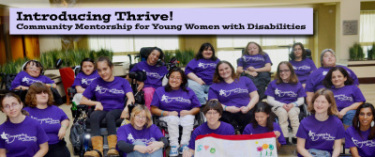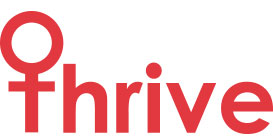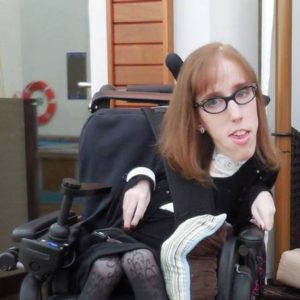 If you read my post about the THRIVE program and my attendance at its Capstone Event in Boston, you’re going to love this one written by the true magic maker of the event. Sandy Ho is the Program Coordinator at Thrive, a mentoring program based at Easter Seals Massachusetts that matches transitional-age women from ages 16 to 24 who have disabilities with an older woman in their community who also has a disability. Sandy wrote a post about Thrive on her blog Perfectly Imperfecta, and I liked it so much that I immediately asked her to write a guest post for us here at Easter Seals.
If you read my post about the THRIVE program and my attendance at its Capstone Event in Boston, you’re going to love this one written by the true magic maker of the event. Sandy Ho is the Program Coordinator at Thrive, a mentoring program based at Easter Seals Massachusetts that matches transitional-age women from ages 16 to 24 who have disabilities with an older woman in their community who also has a disability. Sandy wrote a post about Thrive on her blog Perfectly Imperfecta, and I liked it so much that I immediately asked her to write a guest post for us here at Easter Seals.
Calling my own shots
by Sandy Ho
Here’s something you need to know about me: I am a young woman with a disability. Throughout the process of coordinating the Thrive Mentoring Program and the conference, I was routinely faced with acknowledging how much growing I still have to do. The capstone conference was held over a two-day weekend, and I had the privilege of spending it with 16 other women, 12 of whom were members of the mentoring program to empower transitional age young women with a disability.
At the start of the conference I asked each attendee to finish this sentence using one word: “An empowered woman is…” We did the same activity at the end of the conference, and what was so powerful about this is that each woman was able to fill in the blank for herself, and for her own reasons.
What did we do in between? Well let’s not forget the ten guest speakers we invited too!
- Our adaptive yoga instructor showed me that being a young woman with a disability involves being okay with who you are right at this moment. Whatever your body can or cannot do doesn’t matter, because when we are mentally in-tune with our breath, there is an attention to being connected with our limbs. I might have avoided even trying this before.
- From the author who read from her memoir, I was relieved to find out there is someone else who knows what it’s like to be raised by a mom who wanted to “correct” those “weird” physical habits that come with having a disability.
- Presenters on overcoming ableism made me realize that being a young woman with a disability means I need to be more attentive to the society I live in and to the structures that are in place.
This is a community of incredibly strong willed women! They’ve taught me that there is no square box that we were each meant to fit in, and maybe the whole point of being an empowered young woman with a disability is that I am resourceful, opinionated, strong, and wise enough to call my own shots and do whatever I wish to do. The Thrive program and the capstone conference has shown me I don’t need anyone’s permission to try.











